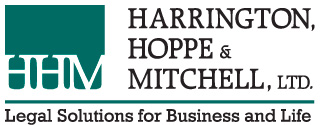Responsibility for Tree Removal Rooted in Location, Other Factors
- December 5, 2017 | By Paul M. Dutton | Public Sector | Contact the Author

When a tree falls in the forest and no one sees or hears it, Mother Natures cleans up the mess.
But when a tree falls in or near the right of way of a public road, the obligation to clean up the mess depends on where and in what kind of political subdivision the tree fell.
Here are some answers Ohio law provides to questions that may sprout up now and then about trees and the damage they can cause.
Tree Situations in Townships
Question: In a township, where the property owners own to the center of the road, and a dead tree in a dangerous condition is located between the edge of the pavement and the edge of the road right of way, is it the obligation of the township trustees or the adjoining land owner to remove the tree, and if it is partly the obligation of the property owner, what can be done to compel the tree’s removal?
Answer: Pursuant to the provisions of Section 5571.02, Ohio Revised Code, it is the duty of township trustees to keep the township roads in good repair; and where a dead tree in a dangerous condition is located within the road right of way, the trustees have a duty to remove the tree even though property owners along the road own to the center of the road.
The township is in control of the roadway. The road’s use is, by nature of an easement, in the public control and the landowner cannot freely control the property as desired. Therefore, it would be the responsibility of the township trustees to remove this dead or diseased tree and not the responsibility of the abutting property owner. Section 5543.14, Revised Code.
Question: In a township where the property owners own to the center of the road, and a tree is located on the adjoining owner’s land outside the right of way, but has large dead limbs overhanging the highway endangering the users of said highway, is it the obligation of the trustees or the land owner to remove said tree, and if the land owner refuses to remove the tree, what can be done to compel this removal?
Answer: Where a tree is located on private property along a township road, but dead branches of the tree overhang the road and are dangerous to travelers on the road, the property owner has the primary duty to remove the dangerous condition, although the township trustees are also obligated to remove the dangerous condition. The trustees may institute nuisance abatement proceedings under Section 3767.03, Revised Code, to compel the property owner to abate the dangerous condition.
But, it remains the obligation of the property owner to trim the tree and, if necessary, destroy and remove the debris. In the case of an emergency, the trustees would also be authorized to remove limbs overhanging the road and endangering travel on the road or compel the property owner to abate the emergency pursuant to Section 3767.03, Revised Code.
Tree Situations in Municipal Corporations
Question: In a municipal corporation, where there is no ordinance covering trees, and a dead tree is located between the sidewalk and curb (i.e., the “tree lawn”) within the street right of way, and the tree is in a dangerous condition, is it the responsibility of the municipal corporation or the adjoining land owner to remove the tree, and if it is the responsibility of the adjoining property owner, what can be done to compel the tree’s removal?
Answer: Where a dead tree is located in a street right of way in a municipal corporation and the tree is in a condition causing danger to users of the street, it is the duty of the municipal corporation to remove the tree; and pursuant to Section 727.01, Revised Code, the municipal corporation may assess the costs of such removal against the abutting property owner. Section 723.01, Revised Code.
Ohio courts have generally recognized that the tree lawn is a part of the highway and, therefore, the municipality is under the statutory obligation to keep it open, in repair and free from nuisance.
Section 727.01, Revised Code, grants to municipal corporations the power to levy and collect special assessments from abutting property owners for costs connected with removing trees from a public road. Thus, although the municipal corporation has the responsibility of removing a dangerous tree from a tree lawn, the abutting owner may be assessed for the costs of removal.
Question: In a municipal corporation, where there is no ordinance covering trees, and a dead tree is located on private property, but overhanging a public street or alley in a dangerous condition, is it the responsibility of the municipal corporation or property owner to remove the tree, and if the property owner fails to remove the tree, what can be done to compel its removal?
Answer: Where in a municipal corporation a dead tree is located on private property but overhangs a public street so as to cause danger to users of the street, the owner of the property has the primary duty to remove the dangerous condition but the municipal corporation also has a responsibility to protect users of the street; and the municipal corporation may institute nuisance abatement proceedings under Section 3767.03, Revised Code, to compel the property owner to remove the dangerous condition.
The primary duty of removing a dead or diseased tree located on private property, but creating a danger to people using the adjoining street, is the property owner, but since the municipal corporation might be held liable for injuries incurred by persons using the street, the municipal corporation should take all necessary steps to remove the dangerous condition; and if warranted, initiate proceedings for nuisance abatement under Section 3767.03.
Raking Up
In summary, therefore:
- Pursuant to the provisions of Section 5571.02, Revised Code, it is the duty of a board of township trustees to keep the township roads in good repair; and where a dead tree in a dangerous condition is located within the road right of way, the board has a duty to remove the tree even though property owners along the road own to the center of the road.
- Where a tree is located on private property along a township road, but dead branches of the tree overhang the road and are dangerous to travelers on the road, the property owner has the primary duty to remove the dangerous condition, although the board of township trustees is also obligated to remove the dangerous condition. The trustees may institute nuisance abatement proceedings under Section 3767.03, Revised Code, to compel the property owner to remove the danger.
- Where a dead tree is located in a street right of way in a municipal corporation and the tree is in a condition causing danger to users of the street, it is the duty of the municipal corporation to remove the tree. Pursuant to Section 727.01, Revised Code, the municipal corporation may assess the costs of removal of the tree against the abutting property owner.
- Where in a municipal corporation a dead tree is located on private property but overhangs a public street so as to cause danger to users of the street, the owner of the property has the primary duty to remove the dangerous condition but the municipal corporation also has a responsibility to protect users of the street. The municipal corporation may institute nuisance abatement proceedings under Section 3767.03, Revised Code, to compel the property owner to remove the dangerous condition.
_________
Paul Dutton is a lawyer with Harrington, Hoppe & Mitchell. His areas of practice include public sector law, business and corporate law and estate/succession planning. He can be reached at pdutton@hhmlaw.com or at (330) 744-1111.

